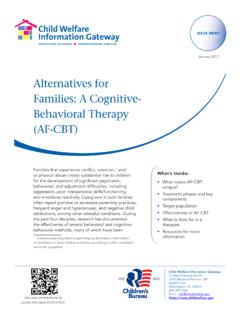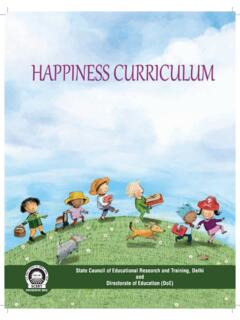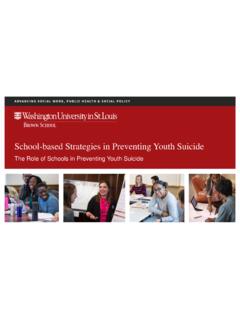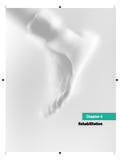Transcription of ADA.org: ADA Caries Risk Assessment Instructions
1 Two downloadable ADA s Caries Risk Assessment forms were developed as practice tools to help dentists evaluate a patient s risk of developing Caries . One form is for patients ages 0-6 years of age and the other is for patients over 6 years of age. Please help us improve the forms by completing a short survey. The forms can also be used as communication tools with the patient or patient s guardian to highlight potential risk factors . Dental offices are encouraged to share this form with their patients. The Caries Risk Assessment Forms may be downloaded, reproduced and republished for non-commercial purposes without first obtaining written permission from the ADA. All other Terms of Use forms were developed through the efforts of the Councils on Dental Practice (CDP) and Scientific Affairs (CSA), along with cariology subject matter experts, and with input from the Council on Access, Prevention and Interprofes-sional Relations (CAPIR).
2 The ADA thanks these volunteer members for their efforts in developing the forms. The Caries risk Assessment forms are not intended to include all possible risk factors . The risk factors selected are intended to provide patient with information that may help them lower the Caries risk over time, while also provid-ing a form that can be integrated into a busy practice setting. It is important to recognize that the scientific evidence related to Caries risk Assessment continues to develop. Some information included in these tools is based on expert opinion. The ADA will periodically update these forms based on: 1) member feedback regarding their usefulness, and; 2) advances in science. ADA member-users are encouraged to share their opinions with the Councils on Dental Practice or Scientific forms are not a substitute for a dentist s clinical judgment.
3 The assessments cannot address every aspect of a patient s health, and should not be used as a replacement for the dentist s experience and judgment. Additional or more focused Assessment may be appropriate for patients with specific oral health concerns. As with other forms, this Assessment may be only a starting point for evaluating the patient s total health status. Find more information on Caries risk factors at: Instructions :The forms are designed to include factors that are easily observed or discovered during routine oral health evaluations. The first two sections, Contributing Conditions and General Health Conditions, can be completed by a dental team member as determined by the dentist. Clinical Conditions should be determined by the dentist.
4 Colors are used to indicate low risk (green), moderate risk (yellow) or high risk (red). For each risk factor, circle or check the boxes of the conditions that apply under the low, moderate or high risk columns. Low Risk = only conditions in Low Risk column present; Moderate Risk = only conditions in Low and/or Moderate Risk columns present; High Risk = one or more conditions in the High Risk column present. Changes in the risk level may be tracked using the form with implementation of risk reduction strategies and with therapeutic patient s observed risk level may be modified (increased or decreased) based on the dentist s clinical judgment, review of the form and other pertinent information. For example, the observation of teeth missing due to Caries may not be regarded as high risk for a follow- up Assessment .
5 Alternatively, the presence of risk factors not listed on the forms may indicate an increase in the overall risk of Caries . ADA Caries Risk Assessment Form Completion InstructionsCaries Risk Assessment Form (Age 0-6)Patient Name:Birth Date:Date:Age:Initials:Low RiskModerate RiskHigh RiskContributing ConditionsCheck or Circle the conditions that Exposure (through drinking water, supplements, professional applications, toothpaste) Yes Foods or Drinks (including juice, carbonated or non-carbonated soft drinks, energy drinks, medicinal syrups)Primarily at mealtimesFrequent or prolonged between meal exposures/day Bottle or sippy cup with anything other than water at bed time for Government Programs (WIC, Head Start, Medicaid or SCHIP) No Experience of Mother, Caregiver and/or other Siblings No carious lesions in last 24 months Carious lesions in last 7-23 months Carious lesions in last 6 months V.
6 Dental Home: established patient of record in a dental office Yes NoGeneral Health ConditionsCheck or Circle the conditions that Health Care Needs (developmental, physical, medi-cal or mental disabilities that prevent or limit performance of adequate oral health care by themselves or caregivers) No YesClinical Conditions Check or Circle the conditions that or Radiographically Evident Restorations/ Cavitated Carious LesionsNo new carious lesions or restorations in last 24 months Carious lesions or restorations in last 24 months (incipient) Carious Lesions No new lesions in last 24 months New lesions in last 24 months Missing Due to Caries No Plaque No Appliances Present (fixed or removable) No Flow Visually adequate Visually inadequate Overall Assessment of dental Caries risk: Low Moderate HighInstructions for Caregiver: American Dental Association, 2009, 2011.
7 All rights or check the boxes of the conditions that apply. Low Risk = only conditions in Low Risk column present; Moderate Risk = only conditions in Low and/or Moderate Risk columns present; High Risk = one or more conditions in the High Risk column clinical judgment of the dentist may justify a change of the patient s risk level (increased or decreased) based on review of this form and other pertinent information. For example, missing teeth may not be regarded as high risk for a follow up patient; or other risk factors not listed may be present. The Assessment cannot address every aspect of a patient s health, and should not be used as a replacement for the dentist s inquiry and judgment. Additional or more focused Assessment may be appropriate for patients with specific health concerns.
8 As with other forms, this Assessment may be only a starting point for evaluating the patient s health status. This is a tool provided for the use of ADA members. It is based on the opinion of experts who utilized the most up-to-date scientific information available. The ADA plans to periodically update this tool based on: 1) member feedback regarding its usefulness, and; 2) advances in science. ADA member-users are encouraged to share their opinions regarding this tool with the Council on Dental Practice. Caries Risk Assessment Form (Age 0-6)Fluoride ExposureA patient can be exposed to fluoride by several means. Ask the patient, parent or guardian about all possible fluoride exposures. No exposure is regarded as a moderate risk for the development of Caries .
9 Sugary Foods or DrinksSugary foods can influence Caries development. Sugars are found in many processed and unprocessed foods, drinks and medicines. Consumers may be unaware that these products contain sugar. The following table lists different forms of sugars used in processed foods: Brown SugarGlucoseMalt SyrupCorn SweetenerHigh Fructose Corn SyrupMolassesCorn SyrupHoneyRaw SugarDextroseInvert SugarSucroseFructoseLactoseSyrupFruit Juice ConcentrateMaltoseTable SugarAccessed from the USDA: Health Care NeedsPatients with developmental, physical, medical or mental disabilities that prevent or limit routine, daily oral health care are at an increased risk for the development of Caries . Medications that Reduce Salivary FlowReduced saliva flow that results in a dry mouth is a common problem.
10 It is caused by certain medical disorders and may be a side effect of more than 400 medications. Drying irritates the soft tissues in the mouth, which can make them inflamed and more susceptible to infection. Without saliva s cleansing effects, tooth decay and other oral health problems become more that may reduce salivary flow include: anti-allergy medications, anti-histamines, decongestants, central analgesics, sedatives, cardiovascular medications (angiotensin-converting enzyme (ACE) inhibitors and calcium channel blockers); muscle relaxants, drugs for urinary incontinence, Parkinson s disease medications, antidepressants, antacids and many others. For more information, please refer to: Ciancio, Medications impact on oral health, JADA 2004:135: Information for Specific Risk FactorsA patient s risk for developing Caries is a moving target.





